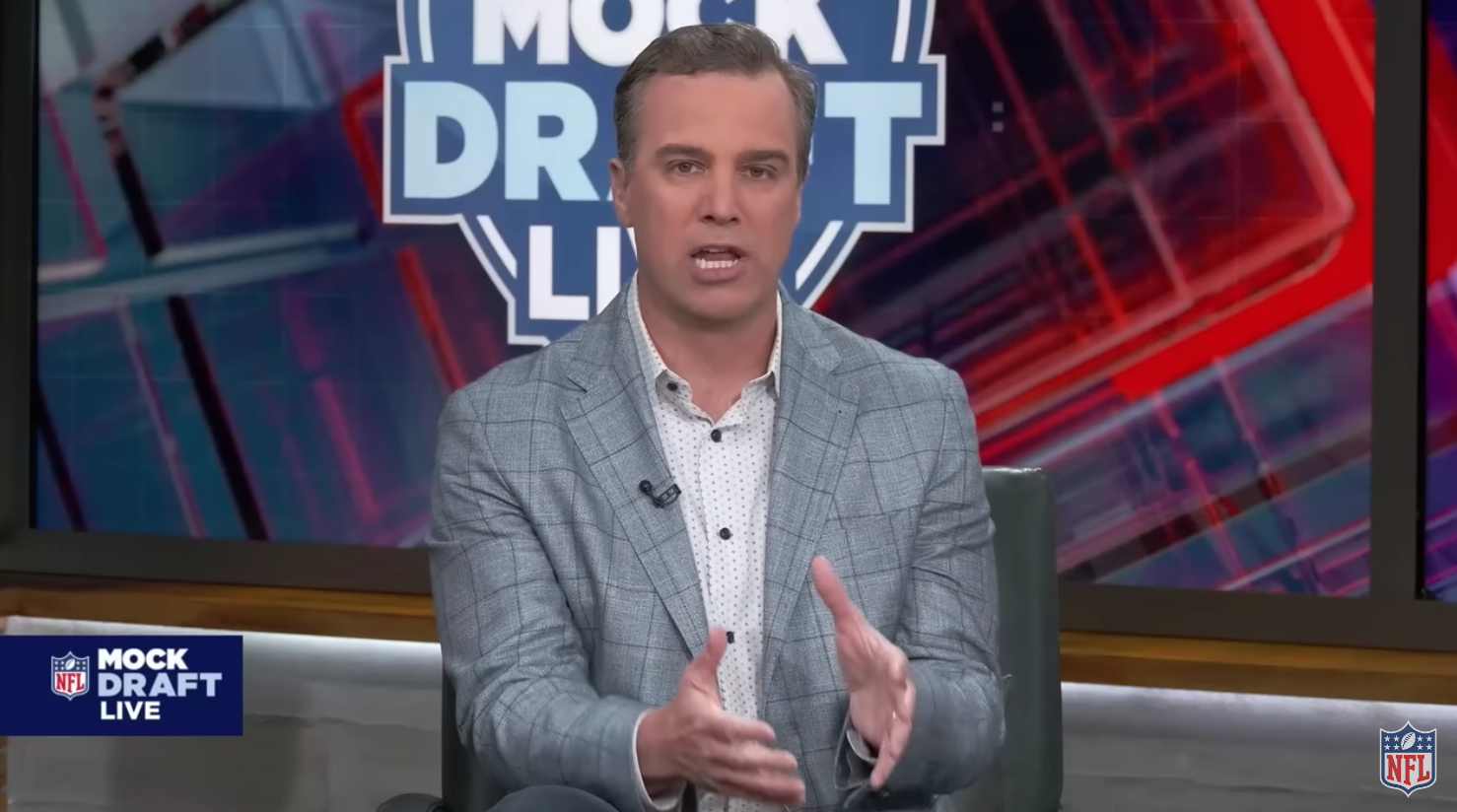Almost since the August 1954 launch of Sports Illustrated (not the first magazine with that name, but the first issue of the still-running publication), the magazine’s covers have attracted a lot of attention. Beyond standing out on newsstands, particular covers have shown off key moments and people in sports, and that’s led to coffee-table books of covers, framed individual covers, and more.
SI has been through a ton of changes since its beginnings. That includes a 2019 sale to current owner Authentic Brands Group, with The Arena Group (formerly TheMaven) publishing SI under license from Authentic. But the covers are still a crucial piece for them.
Co-editor in chief Stephen Cannella has been with the magazine since the mid-90s. He spoke to AA recently on the covers, saying they’ve seen a dramatic shift in focus over his time with SI.
“It’s like a different planet compared to what I started with,” Cannella said. “Covers have changed, and the magazine has changed, for a lot of different reasons. It starts with that we’re a monthly now, and up until about six years ago, we were a weekly.”
Cannella said that print publication shift further fed into the need for SI’s covers to be more thematic and evergreen than just “what happened?”
“Once upon a time, this is not just a function of SI but a function of the media landscape that we’re all in, SI was sort of, for lack of a better term, almost the magazine of record. It was going to tell you what happened that week. It was a news weekly, it came out of that long tradition of what a news weekly was supposed to represent: ‘Here’s what’s happening right now, here’s what just happened, here’s what you need to know if you want to be a well-informed person.'”
“I can remember as a kid, I grew up on the East Coast, and there were times that magazine would land, I was like everyone else, I waited breathlessly until Thursday afternoons when it would land in the mailbox, and pick it up and read a story, and be like ‘Oh, wow, I didn’t know the Seahawks beat the Chargers on Sunday.’ Or if I knew they won, but I didn’t know what happened. And no one needs a magazine to tell them that right now; you know what happened everywhere by Sunday night, what happened on NFL Sunday, for example.”
“So what we try to do now with the cover and the magazine in general is be a lot more topical, a lot more thematic, a lot more forward-looking. Whereas as a weekly, we would go to press on Monday night, and there were times we’d walk into the office on Sunday and didn’t know what the cover would be. We would pull something out of a NFL Sunday or an NBA game, something off of a news event.”
Cannella said the monthly SI schedule has them putting out more forward-looking covers.
“As a monthly, SI, the cover and the magazine, fulfill a very different function in the sports’ fan’s media diet. Whereas once upon a time, that cover was very focused on capturing specific moments, news moments, things like that, now we try to focus a lot on the personalities you need to know, looking ahead to big events like the World Cup, season previews, things like that. It’s looking to try and be a little more thematic with some of the way we cover things, whether it’s the issue we did on the 50th anniversary of Title IX earlier this year or looking ahead to theme issues around money and food and influence and things like that.”
“Functionally, how does that change what the cover looks like? You see fewer action pictures right now. You see a lot more custom exclusive portraits, that kind of thing. You’ll see covers built around an idea or a personality, and much less ‘Hey, here’s something that happened three days ago that you absolutely need to know about.’ Because the lag time between when we close and when we’re out is longer, and we know that these issues are going to be sitting on people’s coffee tables for a month after they’re out, not just six or seven days. We want that issue to feel as fresh and as relevant three weeks after you receive it as the day it was in your mailbox.”
He said the cover remains a critical piece for SI, and he thinks it matters even more than in the past in some ways.
“It’s hugely important. And in some ways, it’s gotten—I don’t want to say more important, but in its importance to what we do internally and also its importance to what we do externally, in terms of what our audience and the people we cover look at and value, the value of the cover in that sense, the importance of the cover has never been higher.”
Cannella said some of that value boost comes from SI covers’ scarcity relative to the past, and some comes from there being less print magazines covering sports than in the past.
“For one thing, there are fewer of them now. We only have 12 this year. So that real estate, we’ve often referred to it over my time here as some of the most valuable real estate in sports media, it’s only gotten more valuable by its relative scarcity. And I think in some ways it’s more valuable, not just that we have fewer of them, but that there aren’t as many people doing this any more.”
He said their covers still resonate with their subjects, too, and scarcity also helps there.
“The cover of SI was always, I think, among the people we cover, seen as an accomplishment, a sign that you’ve arrived, kind of the mark of authenticity or authentication or validation. It’s even more so now because being on the cover of any magazine has become kind of even a more differentiating asset in the media landscape then it was, I would say, 20 years ago. Everyone’s a content creator now, everyone can reach millions of people on Instagram and TikTok, everyone can put out imagery of themselves. But the idea that someone like SI has recognized you as someone worthy of this kind of coverage and this kind of moment, that’s even more of a separator now than it was, say, five, 10, 15, or 20 years ago.”
Cannella said the embrace of these covers by the athletes they cover is huge for SI. That’s included LeBron James wearing a shirt with his first SI cover for a cover this year with his sons Bronny and Bryce:
From The Chosen One to The Chosen Sons 👑
Bronny and Bryce James join LeBron as the newest cover athletes of @SInow, 20 years after LeBron’s debut SI cover. pic.twitter.com/dsaCp1rSMi
— Nice Kicks (@nicekicks) August 30, 2022
“It means a lot,” Cannella said. “I think, personally, in some ways, personally on behalf of the brand, it’s humbling. The idea that this is a brand and a magazine, and the idea of the SI cover has a long history. We’re coming up on 69 years of doing this. And the idea that through all the changes we’ve seen, through the media industry and sports and at SI through the years, the idea that this is still a moment and a piece of media real estate that is valued not just by us who work here, but by people outside, both our audience and the people we cover, the fact that it still means so much to them, that means a ton.”
“It’s humbling, and it’s also something that I think plays into some of the core values of what SI as an overall brand represents. It’s not just great articles and great storytelling, it’s all of those things, but it boils down to the trust and the loyalty that we have not just with our audience, but with the people we cover.”
He said it’s impressive to see how that has translated with both American and global athletes, too.
“I’m not going to speak for LeBron, but I know the relationship that LeBron and SI have had since he was 17, I know the cover means a lot to him. We’ve also seen the cover resonate a lot with someone like Kylian Mbappé, who’s a lot younger and did not grow up in the United States. You would think if there’s a global star for whom maybe SI would not be as resonant, for many understandable reasons, you would think it would be someone like him. Again, I won’t speak for him, but I know for a fact he was extremely excited, extremely honored, extremely happy to be on the cover. You know, this guy has any number of media opportunities, and the fact that he gave us the time and the access to make that World Cup preview cover happen, I think that says it all. It says a lot about the way the cover and the brand itself sort of resonates around the globe.”
Kylian Mbappé is the game’s brightest star. He’s made for the world’s biggest stage.
The French star graces the cover of SI ahead of the World Cup: https://t.co/TPSYSwcOkm pic.twitter.com/gJ0Dqpff2I
— Sports Illustrated (@SInow) November 10, 2022
With that kind of importance on the cover, Cannella said coming up with the best covers possible is a key part of the job for SI editors and staffers, and there’s some thinking there about how those covers will exist across platforms.
“We spend a lot of time internally focused on what the magazine covers are going to be. We think of it not just as this piece of paper. What the cover is, the idea of the cover represents what we do all around it. So when we think of a cover, we think of a moment and a multiplatform event, not just a photo on a piece of paper.”
There are other dimensions contemplated in the planning process. Those include social media reception, framed cover sales, and SI.com accompaniments. The latter is perhaps especially important considering the significance of digital for The Arena Group. They announced in September their sports vertical, including SI, FanNation, The Spun, and more, was up 27 percent year over year in monthly average pageviews for the first nine months of 2022. But even with those other areas getting some discussion, Cannella said the most important focus is getting the best possible physical cover, with other dimensions following from that.
“Do we think about those other things? Absolutely. But thinking about those things, it’s less a decision of who we put on the cover based on how we think they’re going to resonate on TikTok, for example. I think we start with the idea of ‘What’s the best cover we should do, what’s the best story we should be telling, how do we help our audience be the smartest, most informed sports fans that they can be?’ But we do think on the front end with all those decisions.”
Cannella said the longer lead times and planning processes allow for more thoughtful engagement with subjects that can lead to rewards across social and digital dimensions.
“I can remember the days here where it was ‘Okay, we want person X on the cover, let’s call them and see if we can squeeze in a photoshoot in the next three days.’ Now those conversations is not just that with a longer lead time; we have to have a deeper, more detailed, more nuanced plan on what we want to do across platforms. It’s not just ‘Hey, can you sit for an interview, can you sit for a photo?’, it’s ‘Hey, let’s talk about what we can do with a video project, let’s talk about how we’re going to roll this out on social.”
“I wouldn’t say those factors drive coverage decisions necessarily. But they’re a huge part of the planning and the front-end execution, because we think of this as a moment that’s way beyond a piece of paper. The SI cover is also one of our most, if not our most, valuable pieces as a sharable social asset and that kind of thing. I know that the people that we put on the cover, they’re probably not going to be glued to the print magazine, they’re going to be sharing it on their handles and digitally and showing their friends on their phone and that kind of thing.”
He said they saw particular rewards on the video front from shoots they did with Mbappé and Steph Curry.
“One of our most-viewed pieces of social video all year was the 45-second clip we shot with Mbappé, with a few rapid-fire questions. A larger extension is what we did with Steph Curry, on the cover of the Sportsperson issue that just dropped; we did not just the feature video telling his story, but also had a little fun with the trick shot video. All these things, what the cover does is opens up doors of access that I think other people can’t get. And it allows us to have some fun. And not just fun, it allows us to do some things across platforms that we otherwise might not be able to do.”
Just finished a shoot with @stephencurry30, this dude just can’t miss 😳🔥
🎥 @ari_fararooy@warriors pic.twitter.com/fwjhTjz33E
— Sports Illustrated (@SInow) December 5, 2022
As for the specific timeframes involved, Cannella said there’s usually intense focus on a particular cover for three or four months until its publication.
“By the time a cover finally comes out, I’m thinking ‘Man, I’ve been thinking about this for three months. It’s great to see it out in the world.’ So we are thinking pretty far ahead. When we close the magazine, it’s generally about three weeks between the time we close it and the time it lands on the street. We can release especially cover assets and things like that at least a little bit earlier in that life circle digitally. …The life cycle of a cover is anywhere from three to four months from idea conception to execution, with the knowledge that, I can think of a couple of times in the last year and a half where we’ve made decisions and changed things a week before we close based on something that happened. We try to be as flexible as we can, but it’s definitely a longer life cycle than it used to be.”
He said some future planning stretches even beyond those three to four months.
“We’re already having conversations about who’s going to be our cover for the March issue, and even beyond that. I’ve got a good sketch of what I want the 12 issues next year to be, some ideas for who we want on some of those covers. Not all of them. But we do have a cover working idea for something as deep as October next year.”
“We do that because we want our covers to be more thematic and less tied to news events, but also to do the execution the way we want to do it, and a way that I feel does the cover justice and does whoever we’re putting on it justice. That takes somewhat more planning. The people we’re talking to are very busy. And we don’t want to do this as just quickie ‘Hey, let’s take a photo as you’re walking through the room’ things; we want their investment, we want their time, and that takes some planning and some coordination.”
The latest
“The LeBron cover, I would have to say that’s one of my favorites based on just what it represents. It told a great story not just about one player and his family and his story, I thought it told a great SI story too. And it takes on even a little more poignancy given the news about Grant Wahl, who wrote that first cover story about LeBron. Since that cover’s been out, I think that sparked a lot of thought, not just in my head, but I think out in the world too, about SI’s place in the media landscape. Not just about LeBron and his family, but about how we’ve been able to tell some of the most important stories in sports through the generations.”
"I'm very fond of Grant and having that cover shoot –– me being a teenager and him covering that, it was a pretty cool thing. … It's a tragic loss. It's unfortunate to lose someone as great as he was."
–– LeBron James on Grant Wahl https://t.co/Lyc8JXl0Fs pic.twitter.com/tTt35p5iyi
— Sports Illustrated (@SInow) December 10, 2022
Cannella said the Title IX cover also stood out, not just for thematic and thoughtful coverage, but also for the role the audience played in putting it together.
“I really like that one, and not just because of the topicality, recognizing the [50th] anniversary of Title IX. That’s something we’re trying to do in general as we diversify how we cover sports. I think women’s sports is going to be a bigger part not just of what we’ve done, but a bigger part of what, going forward, SI does.”
“And the response to how we put that cover together, it was essentially a user-generated cover; we put out that call on social media with the question ‘What does Title IX mean to you?’, and we got a flood of answers from everyone from professional athletes, some of the biggest names in sports, all the way down to the grassroots eight-year-olds. I thought it was a really cool piece of art the way we combined all those things together.”
What does Title IX mean to you?
Share your photos and stories of the moments that happened #BecauseOfTitleIX for a chance to be featured in Sports Illustrated: https://t.co/maedZihC6P pic.twitter.com/sKlgdPrFyi
— Sports Illustrated (@SInow) March 28, 2022
A half century after the passage of Title IX, @maggiejmertens reflects on how far the quest for equality has come—and where it still has to go https://t.co/ssdBWTotUO pic.twitter.com/qNhDs2ncwN
— Sports Illustrated (@SInow) May 19, 2022
Cannella said the response there showed how SI covers can still resonate with their overall audience, too.
“We put that call out, we weren’t really sure what we were going to get, and we were gladdened and humbled by the response and the way people trusted us with their photos and trusted us to make them part of that story and trusted us, even indirectly, to tell their story. That means a lot, especially for something as personal as Title IX is for a lot of female athletes in this country.”
Cannella said those covers show the heights SI covers can still hit.
“Those are two that stick out in my mind for a lot of reasons. They’re kind of the best we can do when we’re doing things right here.”







